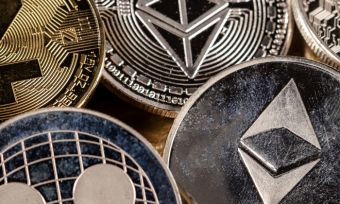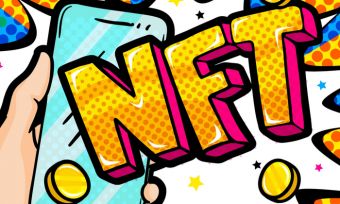Author: Josh Gilbert
Ever since the creation of the internet, people have dreamed about ways to bring cyberspace to life. There have been a few attempts at creating online virtual worlds over the years, like the ill-fated Second Life, but none have managed to establish themselves as a long-term success.
What is the Metaverse?
Undeterred, the tech giants are trying again – this time dubbing the concept the “Metaverse”. For example, Facebook’s Mark Zuckerberg is championing the idea of a shared 3D virtual world, accessed via a virtual reality headset like Facebook’s Oculus.
It’s not just a pipe dream, with Facebook’s parent company Meta set to spend US$10 billion on its Metaverse in 2022. Meta already has 10,000 people working on the project, even though it’s not expected to go mainstream for another five to 10 years.
Facebook refers to its virtual world as “the Metaverse”, but it’s certainly not the only one. There are a few other major Metaverse platforms already up and running, like Decentraland and The Sandbox.
Where to buy Crypto in NZ
The display order does not reflect any ranking or rating by Canstar. The table does not include all providers in the market.
| Provider | Fiat Currencies | Bitcoin | Other Currencies | Est. |
| Easy Crypto | NZD, AUD | Yes | 100+ | 2018 |
| Independent Reserve | NZD, AUD, USA | Yes | 24 | 2013 |
| Kiwi Coin | NZD | Yes | No | 2014 |
| Swyftx | NZD, AUD | Yes | 228 | 2017 |
This information is not an endorsement by Canstar of cryptocurrency or any specific provider. Canstar is providing factual information supplied by providers. Cryptocurrencies are speculative, complex and involve significant risks. Canstar is not providing a recommendation for your individual circumstances or in relation to any particular product or provider.
Cryptocurrency and the Metaverse
One thing that all of these virtual worlds have in common is that they’re hoping you’ll spend real money to buy, sell and trade virtual goods and services.
MANA is the crypto-asset of Decentraland, which can already be used to buy avatars and wearables, as well as in-game goods and services.
Facebook has its own vision for its Metaverse, complete with an in-world crypto-asset and wallet. Yet, Metaverses like Decentraland go further by making use of decentralised autonomous organisations (DAOs) and governance tokens to help put users in control of the virtual world’s future. It allows users to drive changes and updates through voting, potentially democratising the future of online virtual worlds.
MANA can also be used in Decentraland to purchase digital real estate known as LAND. It is essentially a non-fungible digital asset, maintained in an Ethereum smart contract. If your virtual land becomes popular with digital foot traffic, it could even become a virtual Times Square, offering the ability to sell advertising on virtual billboards.
The next virtual land rush has already begun, with a patch of virtual real estate in Decentraland recently selling for a record USD$2.4 million worth of cryptocurrency. The land is in the “Fashion Street” area of Decentraland’s map and will be used to host digital fashion events and sell virtual clothing for avatars.
Earlier this year, Blockchain protocol Bison bought a $740,000 plot of land in Decentraland to create a virtual mall. Sotheby’s Auction House has also established a virtual duplicate of its London galleries in Decentraland, to allow artists to sell their unique NFTs.
→Related article: How To Buy Cryptocurrency in New Zealand
The future of the Metaverse
As the Metaverse finds its feet, it will drive the crypto industry towards mass adoption, if the conditions are right, says Haim Israel – Managing Director and Global Strategist at Bank of America.
Israel predicts the Metaverse is where “we’re going to start using cryptocurrencies as currencies”. However, popular crypto-assets such as Bitcoin and Ethereum are too volatile to play in this role and stablecoins will likely prevail.
Rather than viewing the Metaverse as the future of crypto, it’s perhaps best to look at crypto as a fundamental building block of the Metaverse, if the Metaverse is to deliver on its full potential.
People are voting with their wallets and MANA has soared in value, climbing by more than 3000% in the last 12 months. The year ahead will act as a sounding board for further growth in both the Metaverse and Metaverse assets, but it will likely be a few more years until we really see the Metaverse’s full potential.
Critics often argue about the real-world cases for some crypto-assets, but with the rise of Metaverses we can already see their potential to enter huge markets and reshape multi-billion dollar industries such as music, sports and art.
Of course, it’s possible to build a Metaverse without crypto-assets and blockchain. Yet, even in virtual worlds, possession is nine-tenths of the law.
Crypto’s underlying strengths when it comes to trading and owning virtual assets could be what sees the Metaverse succeed where previous efforts to build virtual worlds have stumbled. Crypto will likely be woven into the very fabric of the Metaverse, establishing the trust required for people to build brave new virtual worlds with confidence.
Learn more about cryptocurrency here
About the author of this page
Josh Gilbert is a Market Analyst at eToro, which involves providing daily market commentary, financial news analysis, reactive market reports and education. Josh specialises in US stocks and crypto assets, and is skilled in financial writing, financial markets, CFDs, forex and stocks.





Share this article